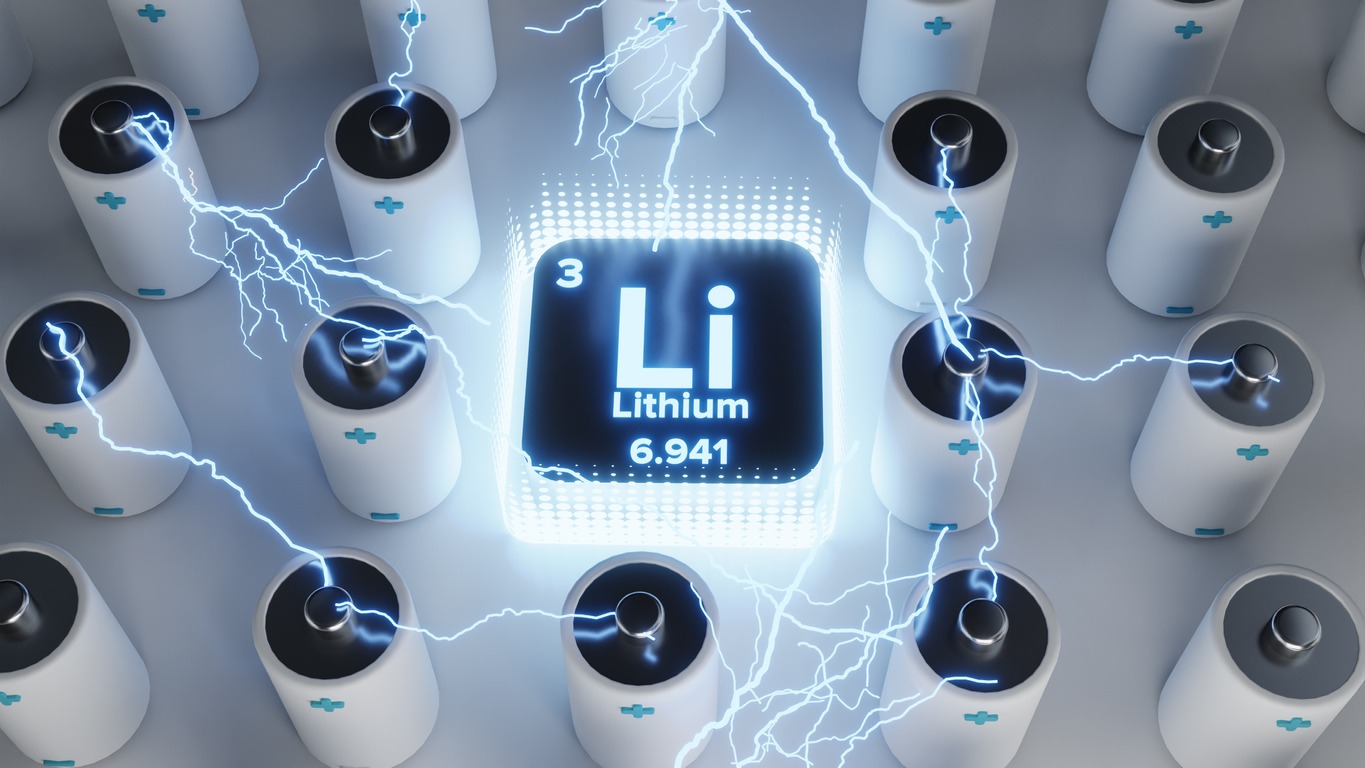The significance of batteries in the modern era cannot be overstated. Batteries, whether large or tiny, rechargeable or disposable, power everything from personal electronics to automobiles. Batteries are used to provide the necessary electrical power when portability is a concern or when connecting a device, appliance, installation, or vehicle to an existing power infrastructure is either impossible or impracticable.
The Types of Batteries
It is challenging to put a number on the variety of batteries that exist. Batteries have been around for a while, or at least as we know them as a commercial product and have seen a lot of advancements and formats come and go.
Non-Rechargeable or Disposable
The term Primary cells, or more frequently in common usage expendable or non-rechargeable cells, refers to batteries that are made to deliver their electrical payload until their electrolytes can no longer produce any more or no more functional electrical output. These batteries cannot be refilled because the electrolytes either undergo a chemical change that prevents them from being changed back or because it is either impossible or impractical to recharge them directly with electricity.
Although there are many different types of rechargeable batteries available, non-rechargeable batteries are still the most accessible and commonly utilized, often being used to power low-draw gadgets. Expendable cells were once the only item available commercially. Batteries in this category often have higher energy densities even though they cannot be recharged, which can make them a superior choice in some applications where lengthy, uninterrupted run or uptime is crucial.
Rechargeable Cells
Rechargeable batteries, more properly known as “secondary” cells, perform the same functions as non-rechargeable batteries in everyday gadgets, but they have a significant benefit in that they can have their electrical charge replenished by directly applying electricity to the battery. After some time, the battery will be ready to work again since it regenerates the reactants in the electrolytes.
All kinds of small appliances, personal electronics, as well as huge, high-output, and heavy-duty vehicle batteries use rechargeable batteries. Rechargeable batteries historically lost more capacity and peak output than non-rechargeable batteries, however, advances in contemporary electrolyte compositions have reduced and, in some cases, even eliminated this difference.
Battery Size and Chemistry
There are five main battery sizes: D, C, AA, AAA, and 9 volts. The most common types of batteries are alkaline, lithium, and nickel.
- Alkaline Batteries: When most people think of batteries, they think of alkaline batteries. There are other sorts of similar batteries, such as carbon-zinc, sometimes known as heavy duty, but we won’t go into detail about these because alkaline batteries should not be utilized in survival scenarios.
- Lithium Batteries: There are numerous types of lithium batteries. There are rechargeable and non-rechargeable varieties. Lithium-ion and lithium-polymer are two of the most prevalent rechargeable varieties. Non-rechargeable forms include lithium-iron disulfide, also known as voltage-compatible lithium batteries, and lithium-manganese dioxide, also known as CR 123A batteries.
- Nickel-Based Batteries: NiCd (nickel-cadmium) and NiMH (nickel metal hydride), are the two types of nickel-based batteries that are most frequently used. Although NiCd batteries are still offered today, they are typically only accessible from specialized stores. Nearly everywhere that batteries are sold still carries NiMH.
Advantages of Lithium Batteries
Low Maintenance
One significant advantage of lithium batteries is that they require little to no maintenance. There is no requirement for periodic discharge, as with some other forms of batteries. Other types of batteries, however, require a ‘balancing’ mechanism to ensure that all cells in a battery are charged equally. In the case of lithium batteries, this is accomplished automatically using the Battery Management System. This means that charging and using a lithium battery is as simple as charging and using it.
Lithium batteries are also easier to place than other types of batteries. They are simple to store and put away with minimal fuss. They are not required to be stored upright or in a ventilated battery box. They can be constructed into whatever weird shape you need. A fresh lithium battery does not even need to be primed when it is originally purchased. Many batteries require such priming, or a full charge from 0 to 100 when purchased. However, there is no such requirement for rechargeable lithium batteries.
Highly Dense Energy
You want a device’s charge to last as long as possible after charging it. You don’t want your battery to fast deplete and become dead when you leave the house. Lithium batteries offer a far higher energy density and a superior ability to maintain a charge than most comparable batteries. The density ensures that there is no voltage sag when discharge capacity declines even when a battery starts to lose power. Your gadget will run just as well with a 20% battery as it would on a 100% battery.
Longer Lifecycle
The process of charging and discharging a rechargeable battery is known as a charge cycle. The number of charge cycles rather than the precise amount of time spent is typically more important for determining how long a rechargeable battery will last. Compared to other types of batteries, lithium batteries have a better lifespan. A well-maintained lithium battery pack can endure between 2000 and 5000 cycles. Most lithium battery packs will continue to function at up to 80% capacity even after 2000 cycles.
Batteries Best for Long-Term Survival
You’ll need a rechargeable choice if you need batteries to power gadgets in a protracted survival or off-grid situation. You’ll probably need to recharge your batteries from a renewable source, like solar, hydro, or wind, if you intend to live off the grid for several years or longer. You’re unlikely to get a regular, dependable, and consistent flow of electricity because of the very nature of these power sources. As a result, when recharging, you need batteries that can tolerate interruptions or drops in power.
- Although NiCd batteries have less mAh than NiMH batteries of comparable size, they are the most forgiving when it comes to irregular charging.
- Long-term storage of LSD NiMH batteries will not cause them to lose their charge. For instance, an LSD NiMH battery called an Eneloop will still be 70% charged after 10 years. After just one year, most “normal” NiMH batteries lose most of their charge.
- In high current draw applications, LSD NiMH batteries perform much better than alkaline and are on par with lithium-based batteries. Utilizing LSD NiMH batteries has just one drawback: it only offers 1.2 volts. To put that into context, lithium batteries utilize between 1.6 and 3.7 volts, whilst alkaline batteries use 1.5 volts.
Battery Safety and Proper Storage Procedures
Safe handling and storage practices will be crucial as batteries become more powerful, offer ever greater energy density, and become more complicated and fragile. In addition to avoiding accidents that can result in injuries or even the destruction of your home, if you handle your batteries gently, you can anticipate that they will last longer and work at their peak efficiency.
Correctly storing and transporting your batteries is crucial for maximizing their effectiveness and avoiding accidents or poor performance. You don’t want to put your batteries into a valet tray or worse, the junk drawer in your kitchen like the majority of people do.
The efficiency of batteries can be decreased, or accidents can occur whenever they are permitted to collide from terminal to terminal with one another or any other item. A dangerous short condition may develop if the battery’s insulating wrapping is nicked, torn, or otherwise damaged. If nothing else, incorrect storage will hasten self-discharge and hasten battery deterioration.
- Keep them in their factory packaging.
- Purchase protective battery cases that are non-conductive, the right size, and adequate in capacity. Keep your batteries out of direct sunlight and harsh temperatures wherever you store them, especially if they are lithium batteries, which have a high energy density.
- Try to avoid crushing batteries in any way possible when moving them. Unsurprisingly, a crushed battery is unsafe as well as useless. You’ll want to avoid this situation because the great majority of batteries contain caustic or other harmful substances.
The significance of batteries in the modern era cannot be overstated. Batteries big part of our daily life functions, from personal electronics to automobiles, large or little, rechargeable or disposable. Planning your battery needs for disaster and survival situations is a must.


